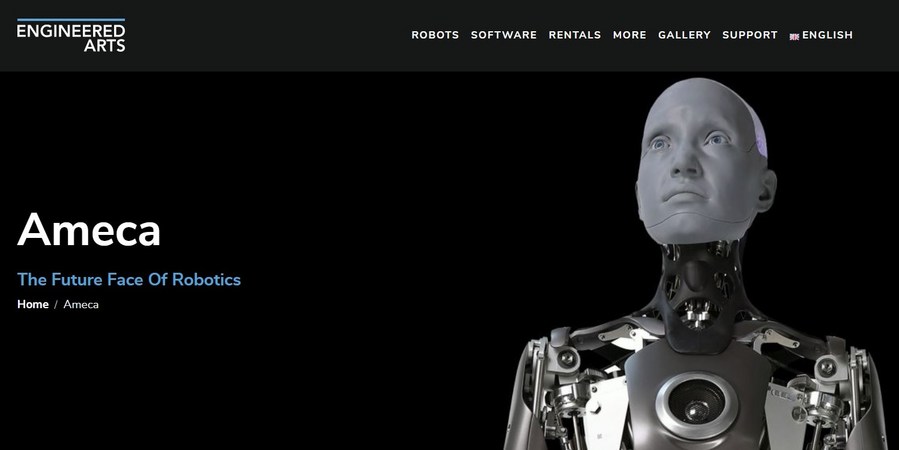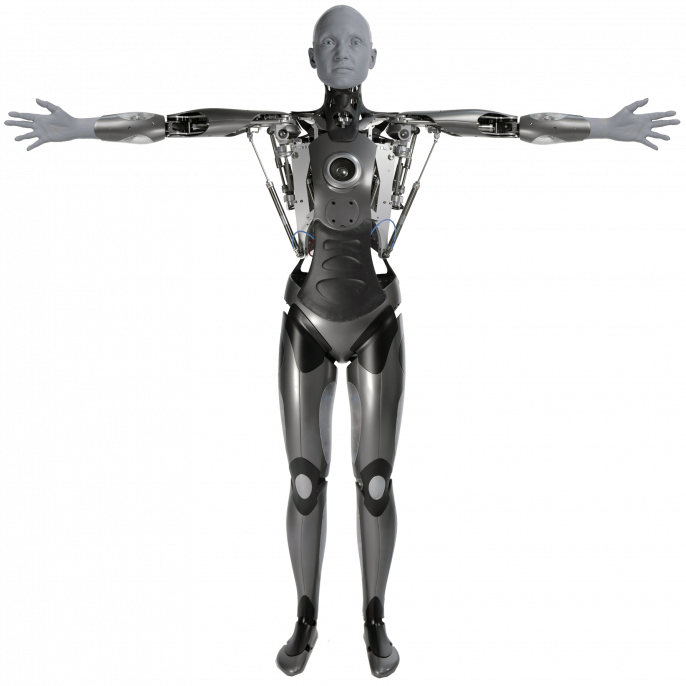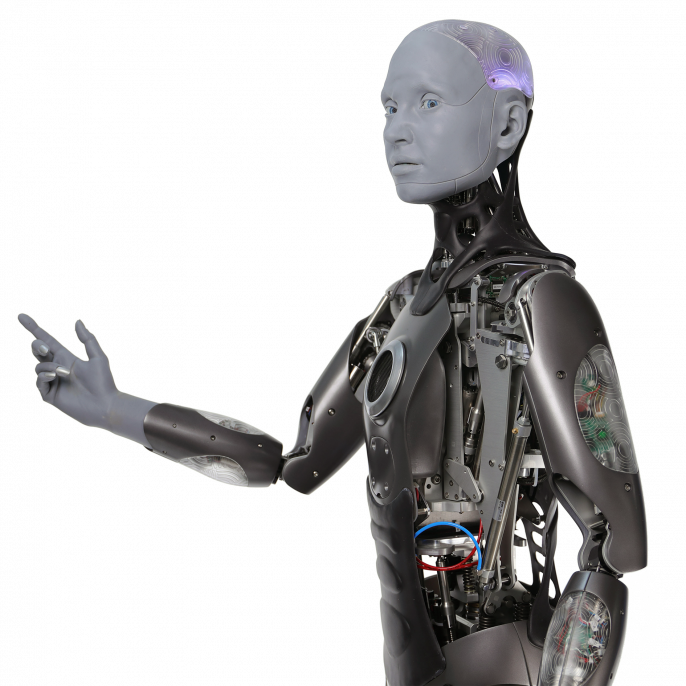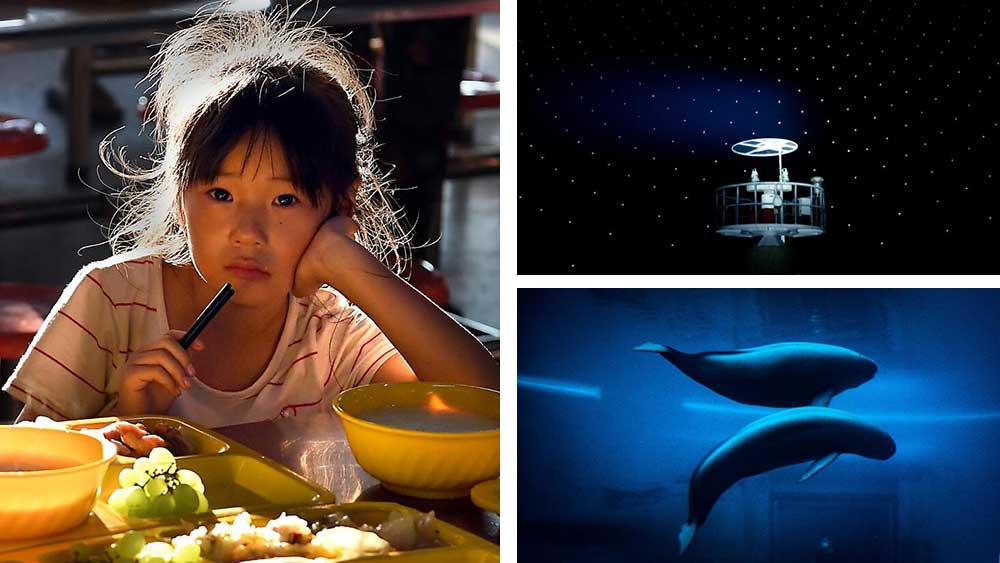
A screenshot taken from the website of Engineered Arts, a leading designer and manufacturer of humanoid entertainment robots, on Jan. 8, 2022 shows the official photo of its humanoid robot Ameca and the invention's brief introduction. (Courtesy of Engineered Arts)
The main use case is for humanoid robot right now is entertainment, communication and interaction with other people.
LAS VEGAS, the United States, Jan. 8 (Xinhua) -- Britain's Engineered Arts' humanoid robot, Ameca, made its first contact with the public at the 2022 Consumer Electronics Show (CES) this week, the largest technology fair on the planet.
During the event, a large crowd gathered around to watch Ameca almost every second and interacted with the robot whose facial features are surprisingly vivid and emotive.
Ameca can not only respond to visitors' questions with no more troublesome than Alexa, Amazon's cloud-based AI voice service available on hundreds of millions of devices, but also respond to conversations with proper recreated expressions.

Official photo of humanoid robot Ameca publicized by Engineered Arts, a leading designer and manufacturer of humanoid entertainment robots. (Courtesy of Engineered Arts)
Ameca has teeth. Ameca's body is all metal and plastic, its face is a deliberately genderless and nonhuman gray. It has 17 individual motors inside its head controlling its movements and expressions.
Despite dazzling spectators with the eerily lifelike expressions on its mobile silicon face, the robot is still unable to walk. According to the company, walking is a challenging task and it is in development plans.
Ameca blinked its way into public consciousness in late 2021 when a video of its facial expressions went viral on social media. Elon Musk responded to the video with one word, "Yikes."

Official photo of humanoid robot Ameca publicized by Engineered Arts, a leading designer and manufacturer of humanoid entertainment robots. (Courtesy of Engineered Arts)
This isn't the first hauntingly humanoid robot Engineered Arts has released. For the past four years, the company has been creating a line of lifelike Mesmer robots.
Besides Ameca, Hong Kong-based engineering and robotics company Hanson Robotics designed and released in 2016 a similar humanoid robot, Sophia, who was named the United Nations Development Programme's first Innovation Champion in 2017, becoming the first non-human to be given a United Nations title.
"The main use case is for humanoid robot right now is entertainment, communication and interaction with other people," explained Engineered Arts Director of Operations, Morgan Roe, in his video. "Ameca is the pinnacle of what we can do. We didn't make her exactly like a human, we designed her as we envision robots of the future." ■












